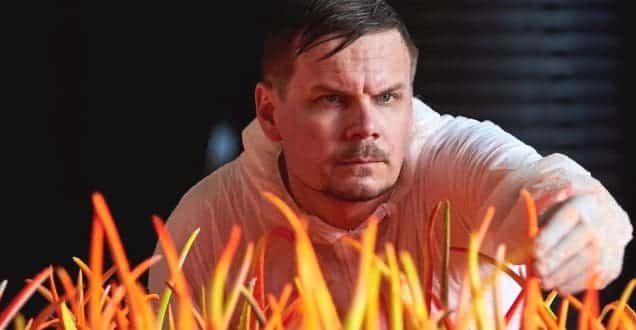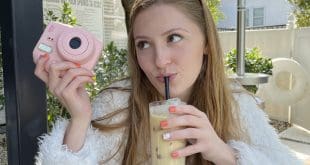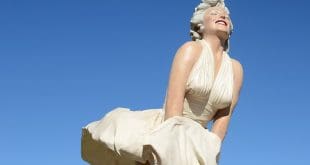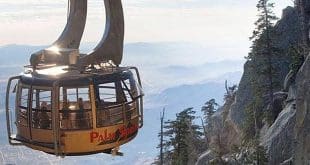PalmSprings.com Spotlight: An Interview with Palm Springs Art Museum’s 2013 Artist-in-Residence, Cristopher Cichocki
Cristopher Cichocki lives and works in the desert of Southern California’s Coachella Valley. He creates multi-sensory artworks of intersecting media: painting, photography, sculpture, video, sound and installation. Cichocki’s “Desert Abyss” landscapes, topographies, and micro-worlds manifest as mutations of nature and industry. These post-earthwork gestures are often defined by his palette of acidic neon colors which accent environmental transformation and decay. The scope of Cristopher Cichocki’s practice amplifies the world around us while illuminating the ephemeral, continually shifting state of our existence. The concept of water in its myriad of forms plays a prominent role in Cichocki’s work as he emphasizes the correlations between life, water and survival.
Cristopher, I find it fascinating that you’re a denizen of the desert and cite the concept of water as playing such an integral role in your work. Can you comment on this relationship?
CC: We are all interconnected by water. My work emphasizes the correlations between life, water and survival. I live in Indio which is 30 minutes away from the Salton Sea. Scientists project that within 20 years the Salton Sea will dry up and become a dustbowl of cancerous debris making the majority of Southern California uninhabitable. I find the negligence that has been given towards the Salton Sea to be an absolute crime. Many works of my art incorporate elements of the Salton Sea serving as a catalyst for awareness and discussion towards the dire issues confronting the Sea and the future of Southern California.
What other ways do the unique environmental qualities of your surroundings influence your art?
CC: I’m fascinated with the geology of the desert. I’m always gathering material that I find in the middle of nowhere and use it within my work. The harsh heat within the desert creates amazing textural decay onto organic and synthetic surfaces alike. There’s never an end to exploring uncharted territory in the desert.
What other concepts—either physical/spatial or conceptual—present themselves as drivers of or motifs in your work?
CC: I define my work as “New Earth Art” where mutations of nature and industry manifest as one. It’s not all about the Salton Sea. My ultra bright day glo takes on different meanings when perceived throughout different regions. People have mentioned the relationships to oil spills and the nuclear radioactivity that have taken place in recent years. Everyone has their own relationship and history to the materials I use in my work. I’d like to think my art has a global application of underlying archetypes. I embrace and create work within wherever I travel. In a sense, I never leave the studio.
You work in a variety of media, including painting, photography, sculpture, video, sound and installation (and their intersections). Can you tell me a bit about your creative process, and how—or would—you categorize your work?
CC: My foundation is painting. I’ve been non-stop painting since I was kid. All of the other mediums are informed by my painting more than anything. The general principal is: build it up, tear it down and start over again. This same painting principal applies to all of my other mediums when experimenting throughout my creative process.
You have a visual blog, “Interconnections,” that you curate. Are these all images of your work?
CC: Only some of my work is in the mix. The artist credits are archived within the sub-menus.
How were you chosen to be Palm Springs Art Museum’s 2013 Artist-in-Residence?
CC: I was selected through the education department at the museum headed by Irene Rodriguez and Robert Brasier. They were familiar with my work and invited me to the residency.
You’ve created a large installation for the Palm Springs Art Museum (in Zone 101 in the Hoover Gallery), “Desert Abyss: Cycle in Cycle” which “explores a desert that has emerged from the depths of an ancient ocean.” Can you tell me more about this?
CC: This region was once submerged under the depths of an ancient ocean. We see some of the aftermath here in the desert. Tumbleweeds remind us of sea coral, aloe vera plants resemble starfish, etc. “Desert Abyss: Cycle in Cycle” is a multi-sensory environment that explores this ancestral bridge. It’s a definite must see in person art experience. The exhibition has a lot of moving parts working together in synergy.
Will you be teaching, lecturing or otherwise interacting with the public as part of your residency?
CC: I’ll be giving an Artist Talk discussing my work on Thursday September 28th from 6-7 pm at the museum. Admission that night is free. I’ve also included in my residency a Symposium that will discuss the sustainability and future of the Salton Sea. “Future Days Of The Salton Sea” Symposium will be held on Sunday, September 22 from 3-5 pm. The event is free with paid admission to the museum.
Cristopher Cichocki, what is it that you most love about the Coachella Valley?
CC: I love knowing there’s still a vast amount of space to explore, discover.






